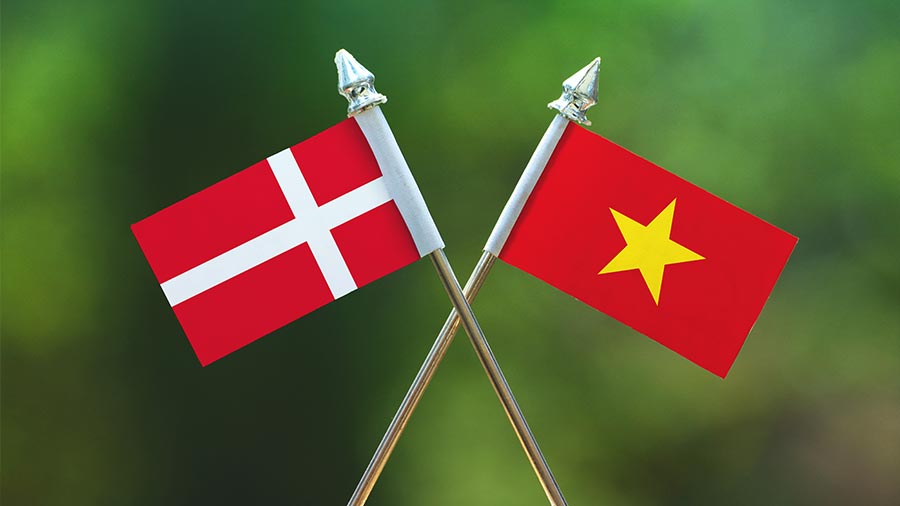Green Energy in Vietnam
Political and legal aspects
Jul. 6 – Government targets and support mechanisms in the field of renewable energy are available in legal documents from the Minister of Trade and Industries and the Institute of Energy.
Examples include:
The Master Plan for Renewable Energy
This source describes national goals for the development of renewable energy sources within the next five years, as well as the nation’s 2025 goals in renewable energy.
 RELATED: Dezan Shira & Associates’ Global Services
RELATED: Dezan Shira & Associates’ Global Services
The Electricity Law
This source identifies opportunities for application of renewable energy objectives in remote rural and off-grid areas.
The Environmental Protection Law
This source defines taxes for five types of energy-related goods, including oil, gas and coal.
The National Energy Development Strategy of Vietnam
The National Target Program in Response to Climate Change
The 2008 version of this source described incentives for emissions reduction and low carbon economic development while the 2010 version outlines an action plan (Ministry of Industry and Trade).
The Law on Energy Saving and Efficiency
This source includes information on the eventual labelling of electronic devices.
In addition, support for energy efficiency and sustainability include financial incentives. For example, foreign and domestic investors in renewable energy can benefit from corporate income, natural resources, equipment import, VAT exemption and have the option of taking long term loans (seven to ten years) at preferential interest rates.
The market situation
Despite the growth of the country’s energy output (an estimated 17.63 percent in 2011), a self supporting market has yet to be established and the country’s energy consumption is running behind its economic growth. Analysts point out that, currently, Vietnam is highly reliant on foreign energy inputs while simultaneously, domestic facilities run at full capacity. This situation is unstable and a potential risk, for example if power plants over 100 megawatts stop working, there is high risk of an immediate shortage of electricity.
The predicted 110.1 percent growth in energy consumption over the next 10 years exposes Vietnam to a number of related challenges including energy price fluctuations, environmental sustainability issues and energy security problems. The government has tried to mitigate these risks and control market growth by pushing for a market-based pricing mechanism (a related law will be effective June 1, 2011) and raising energy prices to make power generators more profitable.
Investors point of view
The market is dominated by the state-run EVN Company but domestic and foreign private investors enjoy a 27 percent, and growing, share of the market.
Draws for investors in Vietnam’s renewable energy sector include strong consumer demand, strong support from the government and a wide range of available options for projects.
Foreign investment projects can take multiple forms including foreign direct investment, joint ventures or mergers and acquisitions. The Vietnamese market tends to encourage two forms of investment: Independent Power Producer (IPP) or Build Operate Transfer (BOT) projects.
Foreign investors will be required to complete project feasibility and profitability reports after choosing to invest, after which a purchase agreement can usually be negotiated with EVN.
Problems and obstacles
The Vietnamese power market certainly has room for improvement, particularly in the renewable energy industry. The sector lacks clear direction, which is necessary to support market development. For example, although plans for incentives exist, incentive policies have not yet been implemented.
This industry also lacks a centralized regulatory body, such as an energy authority. The role of this kind of agency would be to ensure the elimination of overlapping jurisdiction and confusing or overlapping laws, as well as to facilitate enforcement of policies and laws.
Furthermore, the procedures and approvals processes are reported to be slow and complicated. Financing requires the delivery of a large amount of upfront capital, which is usually difficult to raise in developing countries. As well, renewable energy investments tend not to be as attractive as other energy investments, for example 1 kilowatt of wind power is 1.5 times more expensive to produce than coal power. Price distortion over the life of the project makes the breakeven point difficult to calculate. Finally, an inevitable rise in prices will lead to affordability issues among the Vietnamese population but it is clear that the current low prices are not appealing enough for investors.
Dezan Shira & Associates is boutique professional services firm providing foreign direct investment business advisory, tax, accounting, payroll and due diligence services for multinational clients in Vietnam. To contact the firm, please email vietnam@dezshira.com, visit www.dezshira.com, or download the firm’s brochure here.
- Previous Article Goods Imported into Vietnam must Register Certificate of Origin
- Next Article Vietnam Introduces Tax Incentives for SMEs
































